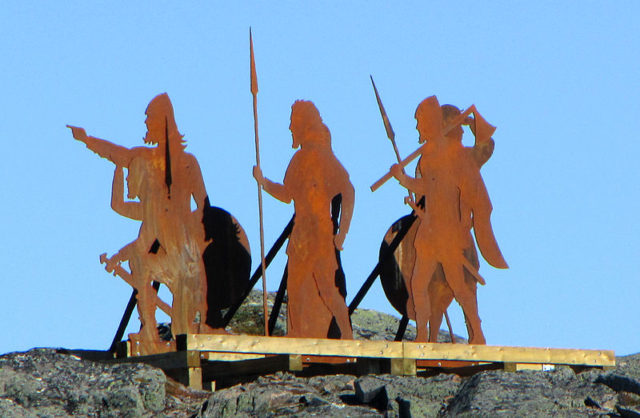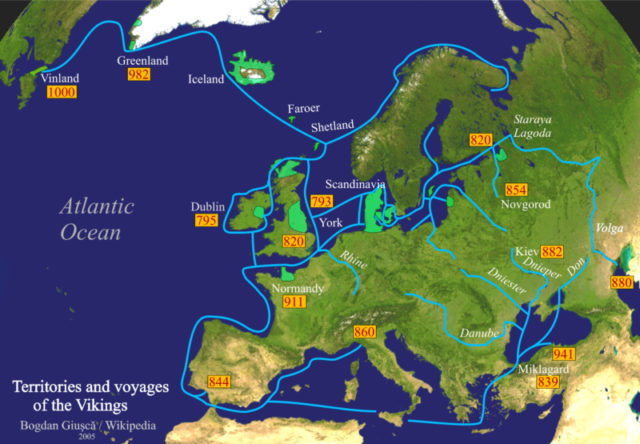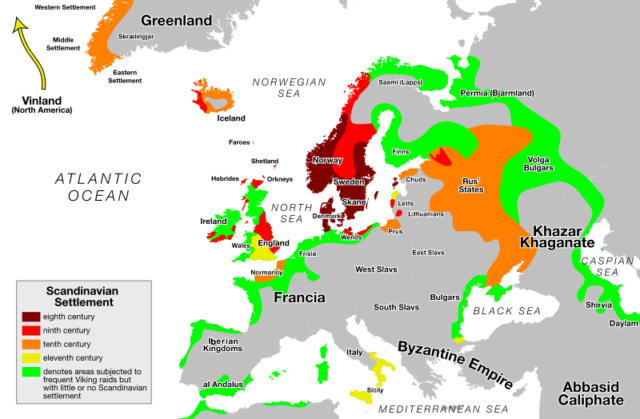To understand the Norse Vikings, historians started with Lindisfarne, the famous monastery in England which was raided in 793 AD. This is seen as the incident which set off the period of imperialistic, religious, and economic change across Northern Europe.
This era lasted for a period of 250 years, until the death of the last known Viking king in 1066 AD, and dramatically shaped the area through the activities of Vikings. Some of this was attributed directly to their activity and others were influenced by other people, but what is for certain is that the Norse Vikings had a remarkable impact on history in the area.

The dawn of the Viking era (factors that influenced expansion):
Expansion beyond Scandinavia meant a wider empire for the Vikings. The reason for this is still an issue of much debate between historians. But what is evident is that during the 4th century, Viking boat building activity was at an advanced development that allowed them to explore as far as northern America.
By the 8th century, they had developed advanced imperialistic societies. This meant an ever-growing population, and further expansion was imminent. Other factors that allowed them to expand were political power and personal enrichment. Going out to trade, explore, and raid meant wealth for those who participated. The Vikings were expert boat builders and had advanced navigational skills. This meant that their empire extended in huge concentrations as far as Russia.
Vikings’ settlements:
Ireland has provided evidence of the activities of the Viking legacy. The Vikings had started building sites on foreign soil to use as settlements. Vikings began developing settlements at sites in Ireland to be used during winter. This showed a change in tactic by the raiders who had attacked Lindisfarne in England, 50 years ago.
The sites which were excavated in Ireland are called longphorts, and they provide the evidence. The ships would be housed over the winter, and this provided the platform for settlements. These ports served many purposes and over time became the import and export hubs for Viking prosperity. They made access to the sea easy and, where fortified, meant that their ships were safe and sheltered. Another important feature is that it allowed bases from which they could conduct raids on the settlements.

Viking economics:
Vikings had employed a variety of trade goods to generate their profits. They were involved in raising and grazing domesticated animals, called landnam. This type of farming method was unsuccessful in Iceland, Greenland, and Ireland. The devastating effects inflicted on the lands can be felt today and led to the Norse downfall in those areas.

But it did nothing to deter the Vikings from their plunder; this was more lucrative than their land grabs. They raided lands as far as Asia and Europe, and became so successful that they were able to supplement their trade with raided items. Silver ingots made them wealthy beyond their imagination, and it’s reported that they buried it in hoards. However, they also conducted legitimate trade. The biggest trade item was slaves, which they bargained for with the Persians and Charlemagne’s Western Europe.
The expeditions to the West:
Vikings had explored a lot of lands and made their way to Iceland in 873 AD. They weren’t so successful there, and neither were they in Greenland, where they reached in 985 AD. They had erroneously tried to implement their landnam style, which caused environmental damage; so big so that it effected the climate of the area. They were completely unaware that they’d caused their own downfall as they experienced severe winters. This was caused by erosion of soil, lower sea levels, and bad farming techniques. A further problem faced by the Norse Vikings was that they were not alone. They had found competition in the area by the Inuit’s ancestors – the Vikings called these the Skraelings, About Education reported.

In search of better lands further westward Lief Erikson made it to Canada in 1000 AD. Nevertheless, this also proved to be an unsuccessful sojourn and a tragic end to the Norse Vikings.
The settlement established at the place he made landfall, L’anse Aux Meadows, was doomed. This occurred at the end of the Viking era of influence and marked the end of the Vikings.
